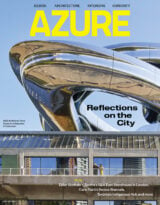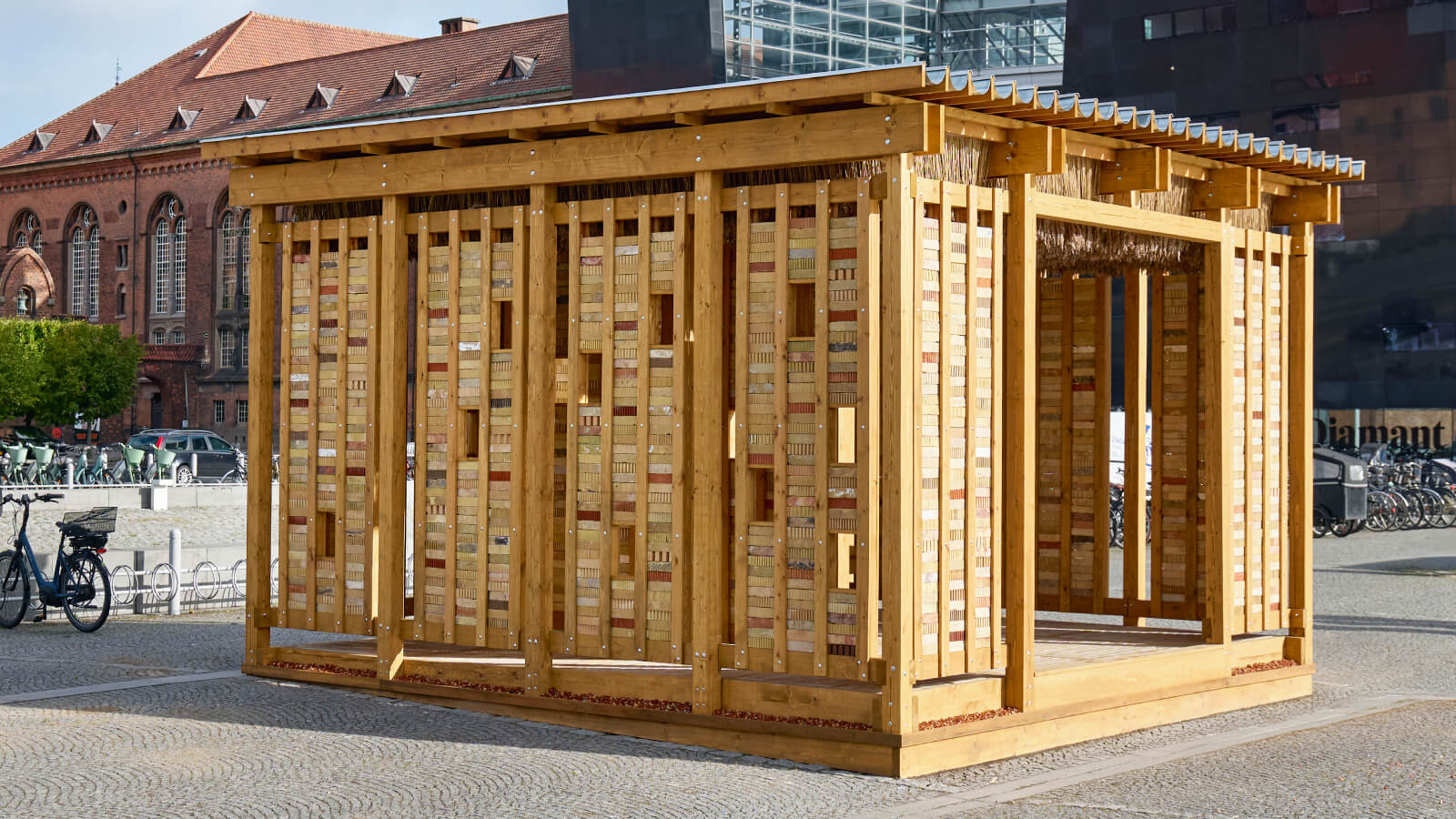
In the past few years, Copenhagen’s 3daysofdesign has cemented its status as a major player on the global stage, and a formidable match for Milan. Could Copenhagen soon rival Venice as a locus of architectural influence? The inaugural Copenhagen Architecture Biennial (CAFx) opened on September 18 to much fanfare, but like 3daysofdesign’s relationship to Milan Design Week, the event is more of a counterpoint to Venice than it is a competitor. With its inaugural theme, ‘Slow Down,’ the biennial takes aim at architecture’s culture of acceleration, advocating instead for more reflective and sustainable forms of practice. It’s an intriguing, even paradoxical choice in an era when the climate and housing crises demand not slowness, but decisive action. Yet the theme lends the event a remarkable sense of intimacy, even across more than 100 activations — from installations and exhibitions to lectures, film screenings and studio visits. Already, highlights are beginning to emerge. Take the two Slow Pavilions, designed by emerging practitioners — Slaatto Morsbøl and Tom Svilans & THISS Studio — using recycled, regenerative and reusable materials. These structures serve as public hubs during the biennial, with plans for their future reassembly and reuse already in motion. Meanwhile, a two-day conference called Assemble! explored the politics of architecture, with the intent to drive sector-wide changes in regulations, ownership models and construction practices.
We caught up with curator Josephine Michau (former curator of the Danish Pavilion in Venice in 2023) to chat about “slowness” as a throughline in this year’s program, navigating the tension between sustainability and spectacle, and influencing engagement and lasting change beyond the biennial.
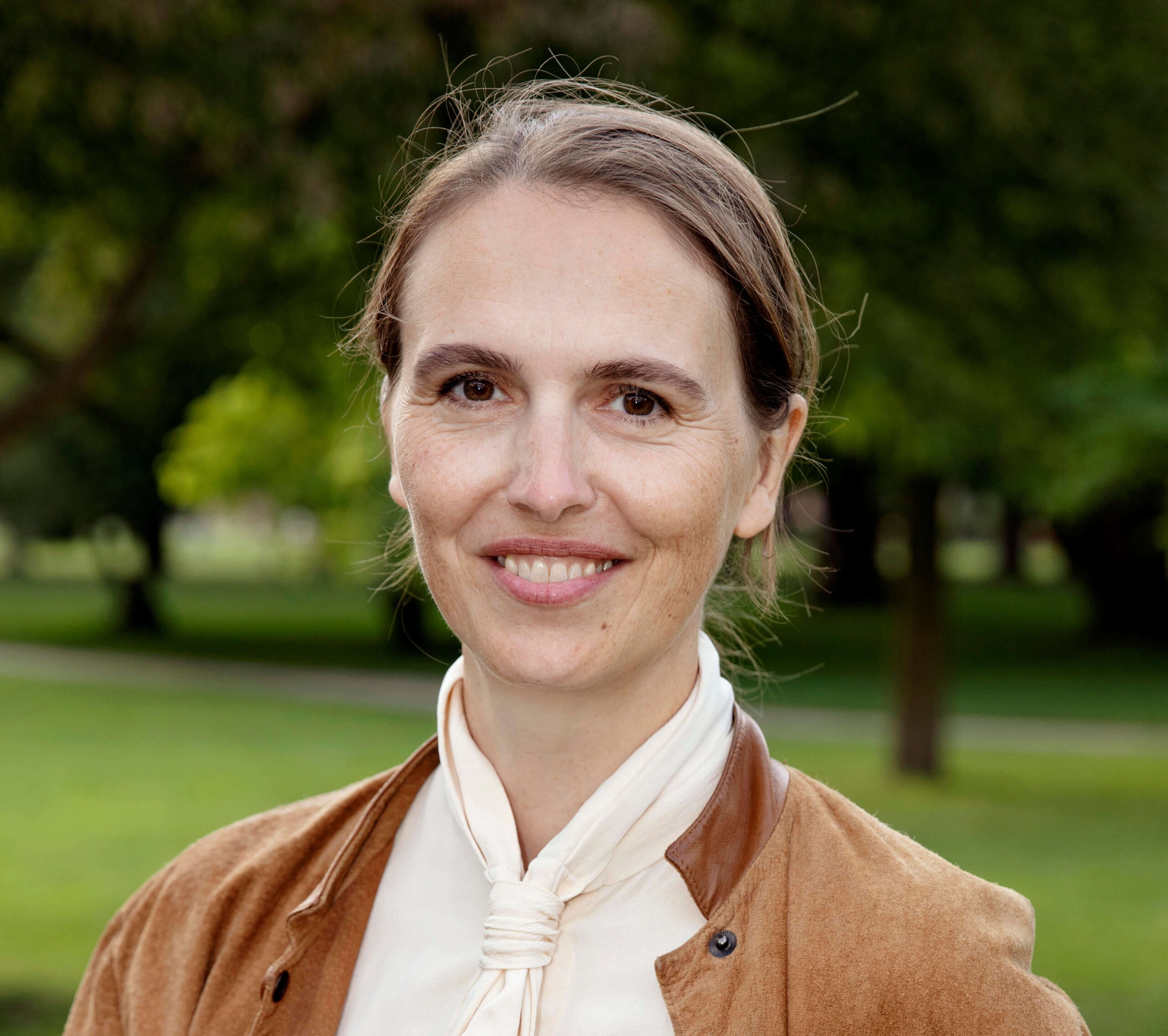
The Copenhagen Architecture Festival has been running for a decade, but 2025 marks its transformation into a biennial. What convinced you that this city needed a platform of this scale, and how do you see it reshaping Copenhagen’s place on the global architecture map?
- Josephine Michau
We actually started as a film festival (I have a background in film distribution), and that’s still a big part of our program. Architecture was always the lens, and film was more of a format. So, the focus was always architecture in a wider sense, not just the buildings, but also life between the buildings. What film can do is to gather people in the same room and have a common point of discussion and conversation. And film is also a great medium to see buildings from new perspectives.
Architecture is something that concerns everyone, and it’s important for people to be involved in the development of their cities. But there are also a lot of people that are unaware about how planning and architecture is such a big part of our lives, from birth to death. It’s about giving people the language to approach that and understand the mechanism. We quickly expanded our formats, and the idea was to democratize the conversation about architecture and bring it to a wide audience, combining the film screenings with guided tours, debates and performances.
Over the past 10 years, the festival has evolved from a modest event into a more critical platform for architectural discourse. We reached a point where we thought that that the ideas and the urgency and the audience had all grown. It was not about scaling up for the sake of scaling up, it was more transforming into a biennial so we had the time and the space to go deeper, to create something that had a more long-term impact.
We were always running extremely fast and not able to create the relationships and the rootedness that that we wanted to. The Biennial is only part of a continuous exploration and conversation about various topics, and that also means that it’s really not about spectacle. When the biennial dates are over, we continue what we’ve learned — the exchanges, the relationships, the connections, the knowledge we gained — through our other programs.
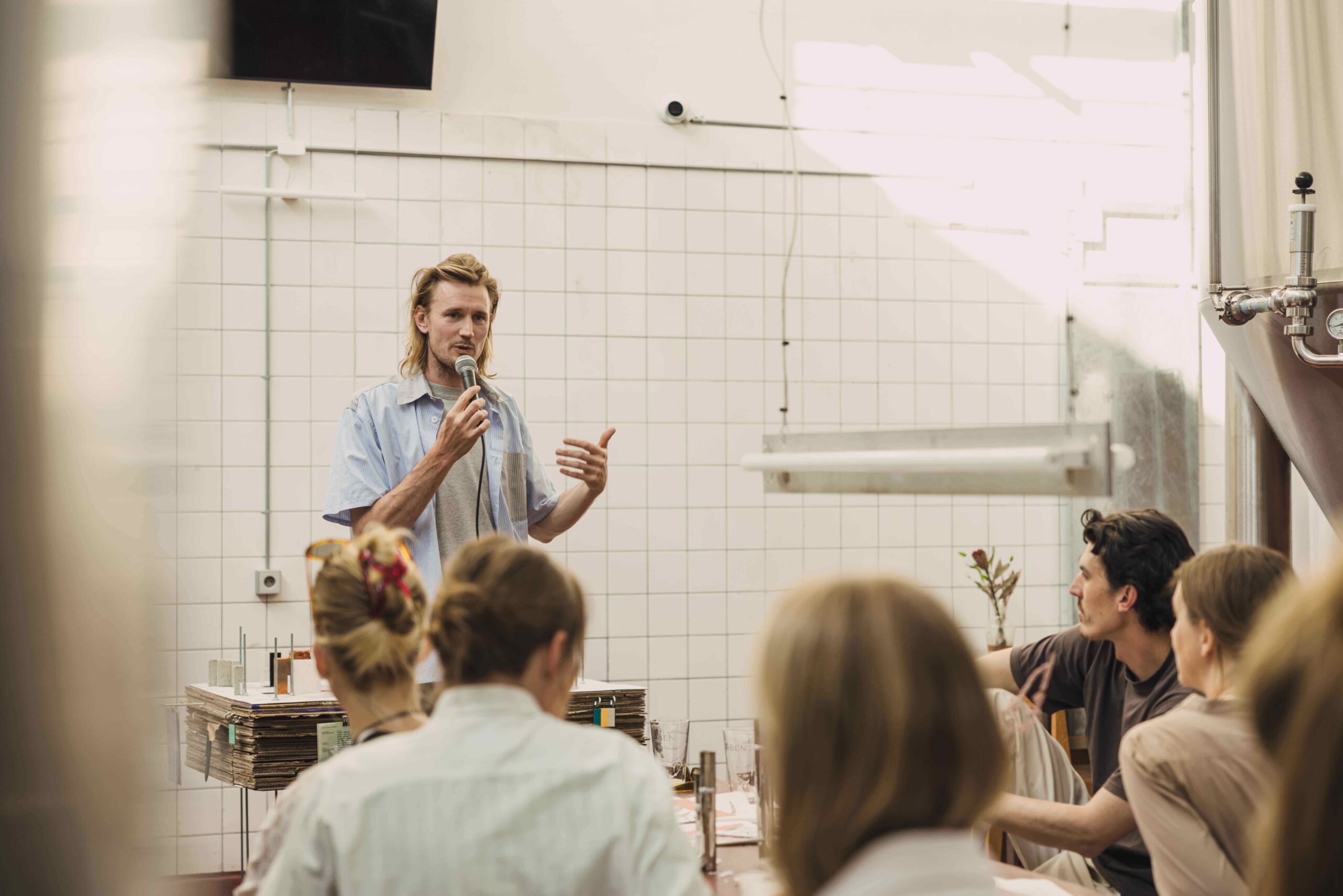
The Venice Biennale has long been the dominant stage, and Chicago has positioned itself as a North American counterweight. Where does Copenhagen situate itself within this landscape?
Each of these biennials has its own DNA. Venice is a powerful stage for symbolic and speculative architecture; Chicago brings a strong academic and curatorial voice rooted in American urbanism. Copenhagen enters the scene with a different proposition shaped by the Nordic model of collective responsibility, social equity, and a long-standing design tradition. We’re not trying to replicate Venice or Chicago; we’re interested in becoming a venue where experimentation and reflection can take a center stage.
We see Copenhagen as a laboratory where we test different things and we are really situated at the intersection of environmental urgency and global democratic traditions. And as we are rather small, that’s also our strength. We are much more agile. That’s maybe where we differ from a more traditional biennial — it runs for a very long time, and of course, it has great impact, but then it’s taken over by new biennial. We also take that responsibility on us to follow up on what comes out of the biennial, and I’m sure it will also live on in other networks. We can’t control everything, and we don’t want to. We want to create a ripple effect.
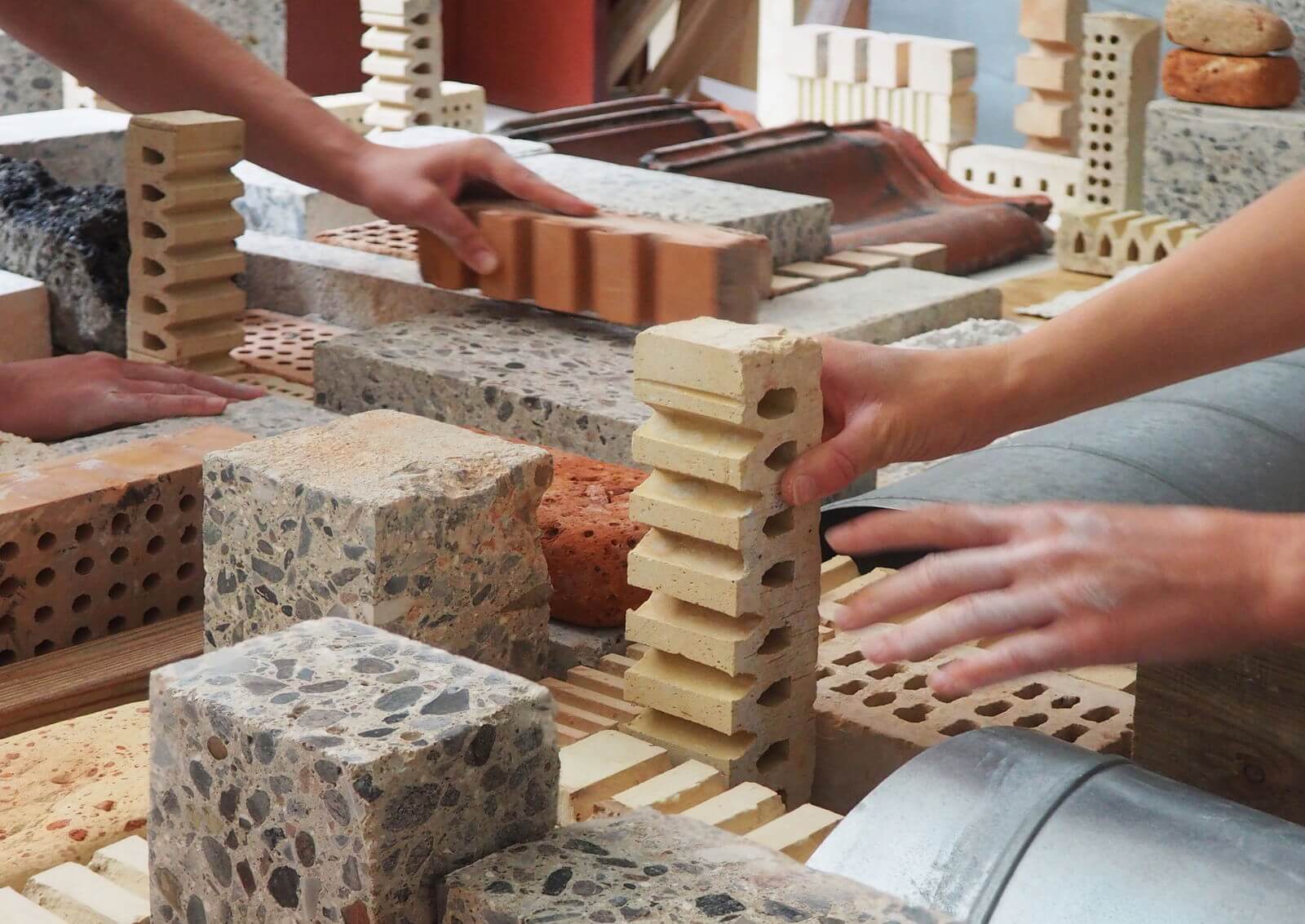
To what extent does this event emerge from Denmark’s specific architectural culture, and to what extent is it meant to serve as a global platform?
Of course, Copenhagen is already recognized for livability and progressive urbanism. The identity of this biennial is deeply rooted in Denmark’s architectural culture, but not in a nostalgic or nationalistic way. Denmark has a legacy of human-scale design, cooperative housing, and a strong welfare state to secure the good life for everyone. But these values are being stress-tested by climate, by migration, by shifting demographics and economic systems.
We want the biennial to emerge from these tensions. Not as a celebration of Danish exceptionalism, but as a platform for exchange. We’re inviting practices, thinkers, and communities from around the world that respond to the same conditions that we’re facing here, such as aging infrastructure, ecological limits, social fragmentation. The local context becomes a lens, not a boundary, that values durability, modesty, and care.
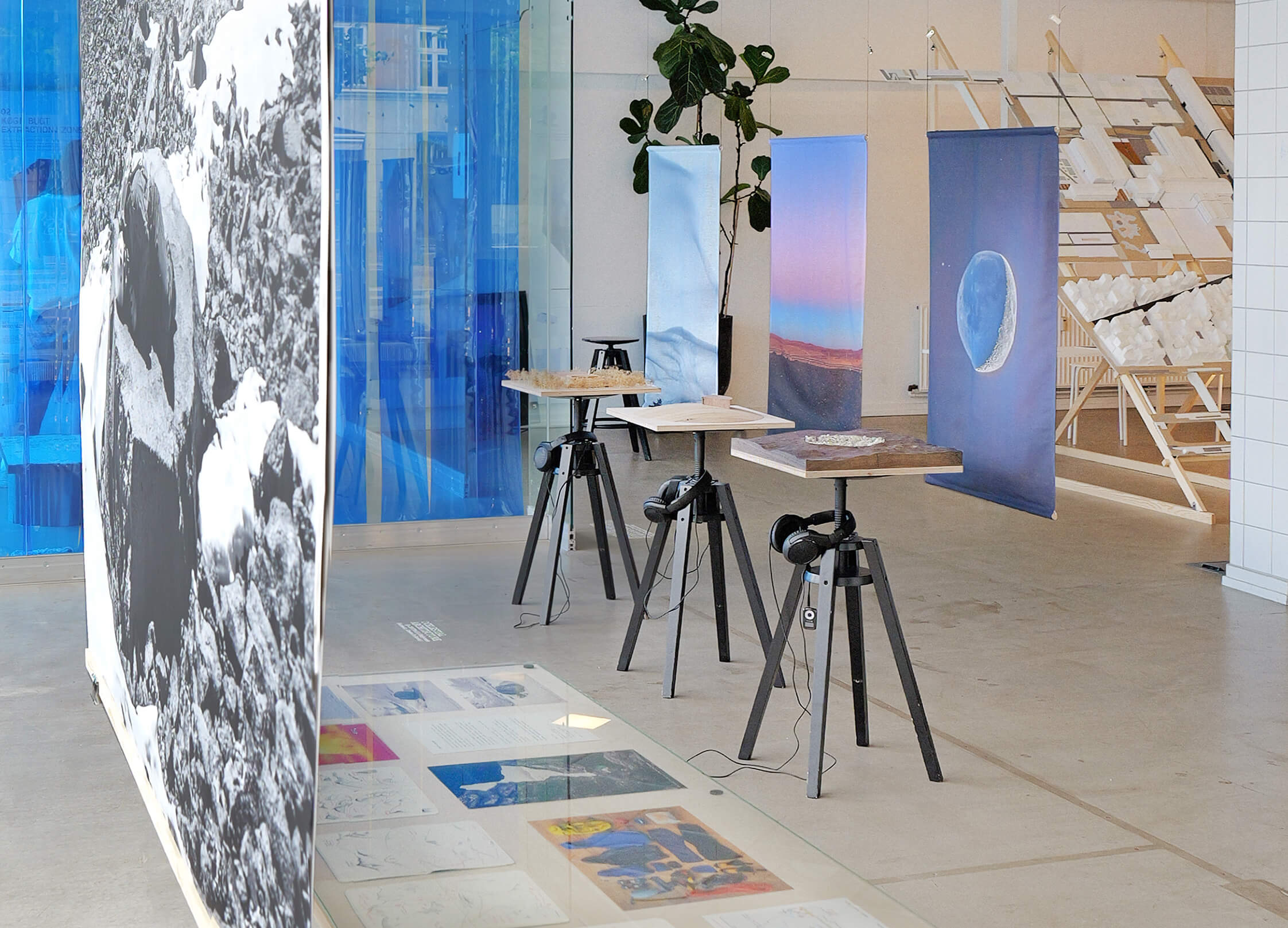
Your choice of “Slow Down” as the inaugural theme is striking in a world of hyper-acceleration and efficiency. In Venice we’ve seen themes like “Laboratory of the Future” or “How Will We Live Together?” which posed open-ended questions. By contrast, “Slow Down” feels more like a manifesto. Was that intentional?
“Slow Down” is both a provocation and an invitation. We live in a moment of perpetual acceleration. Build faster, grow faster, solve everything now. But architecture, at its core, is a slow discipline. Buildings take time. Cities evolve over generations. We chose this theme to foreground temporal responsibility to ask: What does it mean to build not just for the future, but with the future in mind?
It’s an invitation to see what would our society look like, sound like and feel like, if we were to decelerate? We’re all collapsing. The planet is suffering, people are suffering, our whole ecosystem is suffering. It’s not a matter of if we should decelerate, it’s maybe how we should decelerate that we are exploring — because there’s no doubt that we have to slow down. So, the theme also becomes a methodology in how to approach our way of operating in this world. We have a group exhibition that explores these themes profoundly: new ways of practicing architecture and also understanding the entire material chain of the building sector and new ways of working with natural and resources.
Will each edition take on a radically different theme, or do you see “slowness” as a long-term framework guiding multiple years?
While each biennial will have its own focus, slowness is not just a theme. It’s a methodology. It informs how we curate, how we collaborate, and how we think about impact. So yes, future editions will explore different ideas, but always with this slower, more reflective approach in mind.
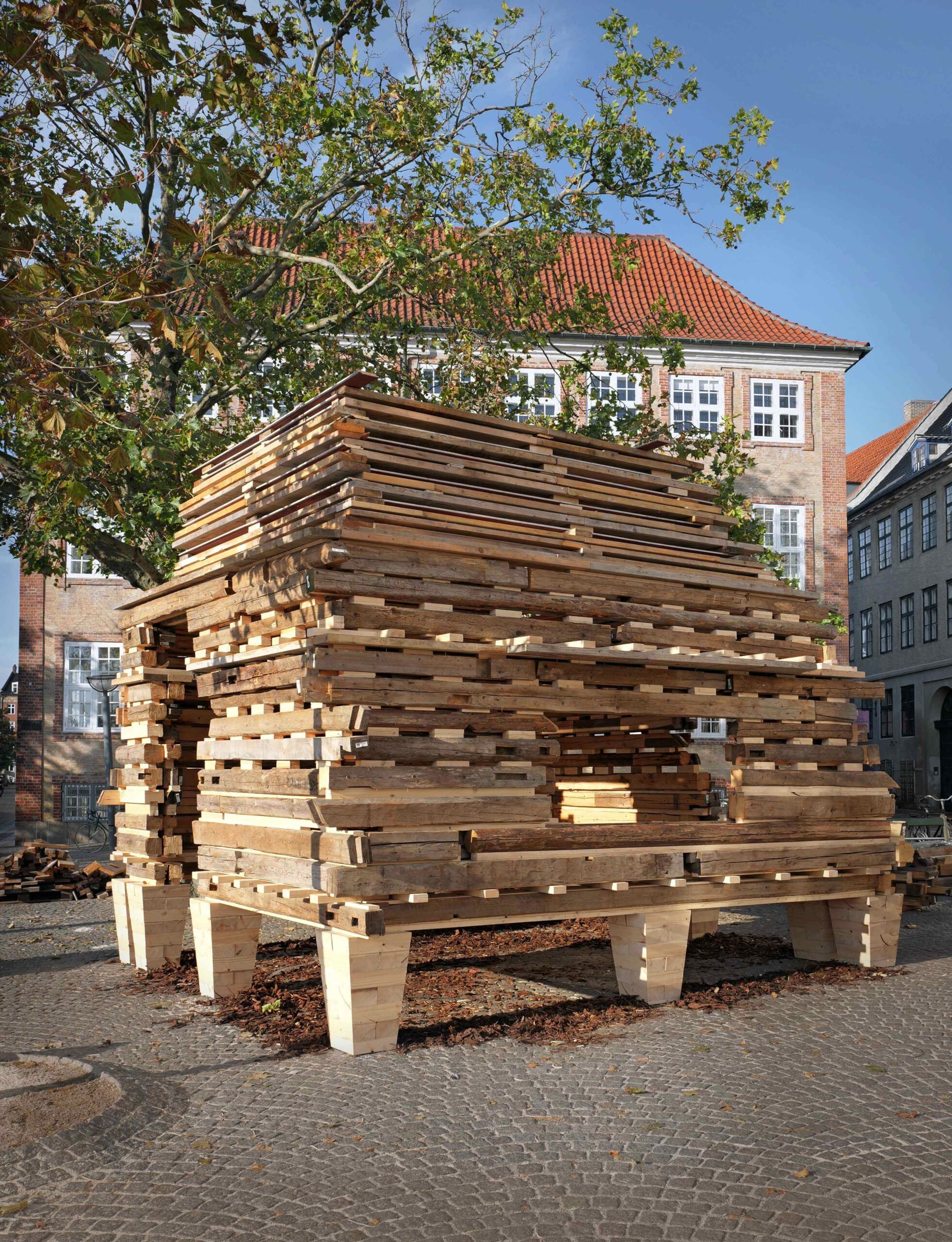
How do you reconcile the idea of slowness with the biennial format itself — an event that must be produced under immense deadlines, and then dismantled within weeks?
This is one of the paradoxes we’ve had to face head-on. A biennial is, by nature, temporary. But it doesn’t have to be disposable. From the start, we’ve worked to embed slowness into our processes through long-term partnerships, research-based commissions, and materials that are designed to be reused or recontextualized after the event. Slowness also means resisting the pressure to do everything at once. We’ve intentionally curated moments of pause, silence, and contemplation into the program. It’s not about spectacle, it’s about depth. The biennial is just one chapter in a longer conversation.
The biennial is part of Copenhagen Architecture Forum, we have a platform to continue the conversation, explore points of action, to continue partnerships. We have this exhibition space in the Meatpacking District (where we’re also showcasing the Slow Down group exhibition right now) and there we have more or less weekly events where we invite the public to workshops or discussions. We do film screenings all year round in the cinemas. We engage with the local primary schools and try to engage the children in architecture and understanding their city and creating new ideas of future cities that they would want to inhabit.
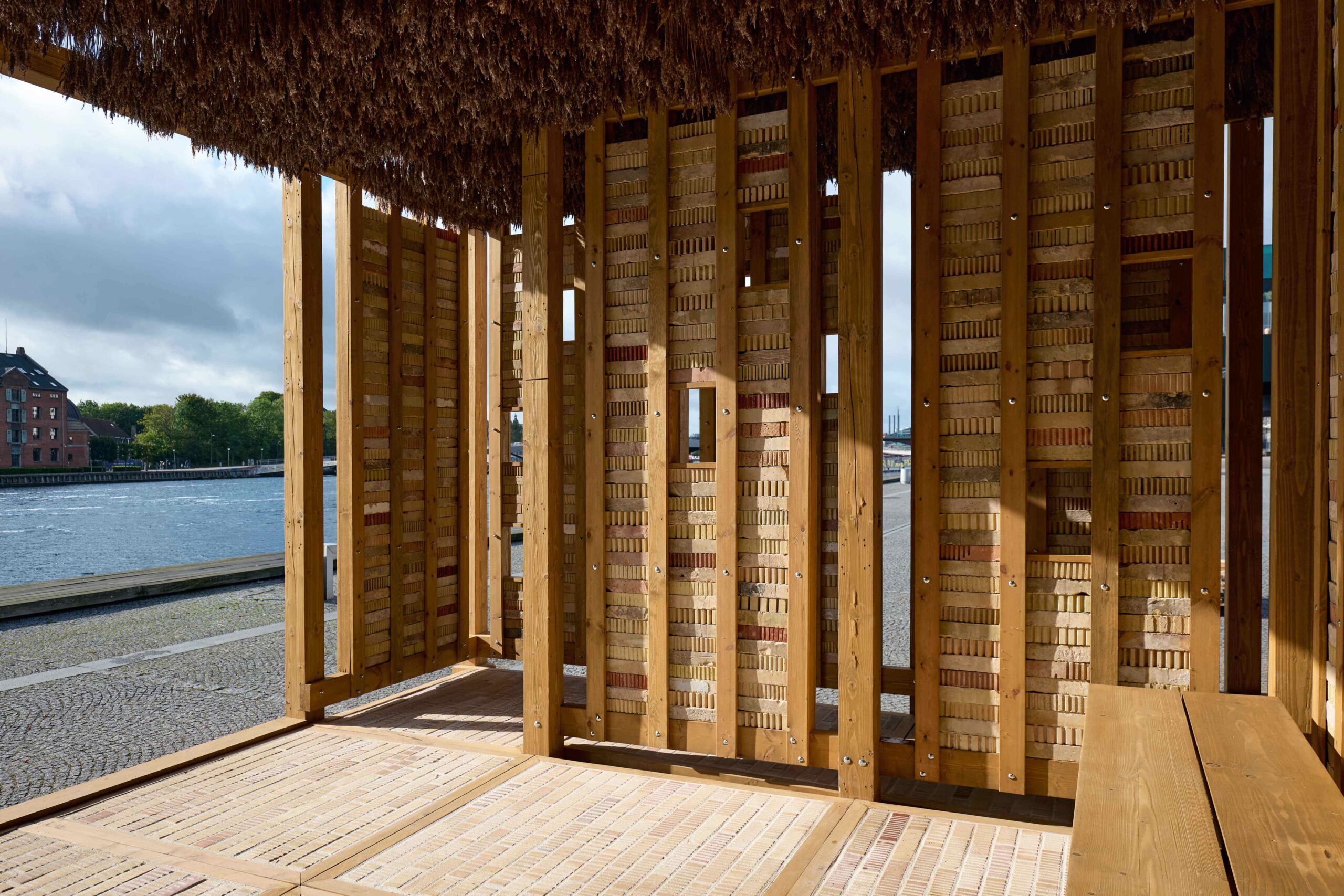
The two “Slow Pavilions” are built from reused materials and designed to be disassembled. Beyond symbolic value, how do you see them testing new models of practice for the profession?
The pavilions are not just symbolic; they’re functional prototypes. They challenge the norms of authorship, permanence, and performance in architecture. One is a gathering space, the other a place for reflection. Both are constructed entirely from reused materials sourced locally. They test circular practices not as aesthetics but as processes taking into account logistics, maintenance, labor, and disassembly.
That’s essential. If we want circularity to move from the fringe to the mainstream, we need to show not just what is possible but how it’s done, and to broaden the participation. These are ideas that a lot of people have been talking about for a long time, but there’s also a lot of people that are left out of the conversation. We really want to make this part of the mainstream by showcasing how this can be done, and at the same time, be deeply aesthetic as well. This new ethical approach to architecture has aesthetic implications, and these pavilions are also suggesting a new aesthetic. And of course, to accept that new aesthetic, it also requires a change of culture. It has resonated very widely, and the audience is starting to understand the value. You can see why a cut up brick, a used brick, is extremely beautiful, or how old wood from a barn has an atmospheric value that you can’t find from a newly cut tree.
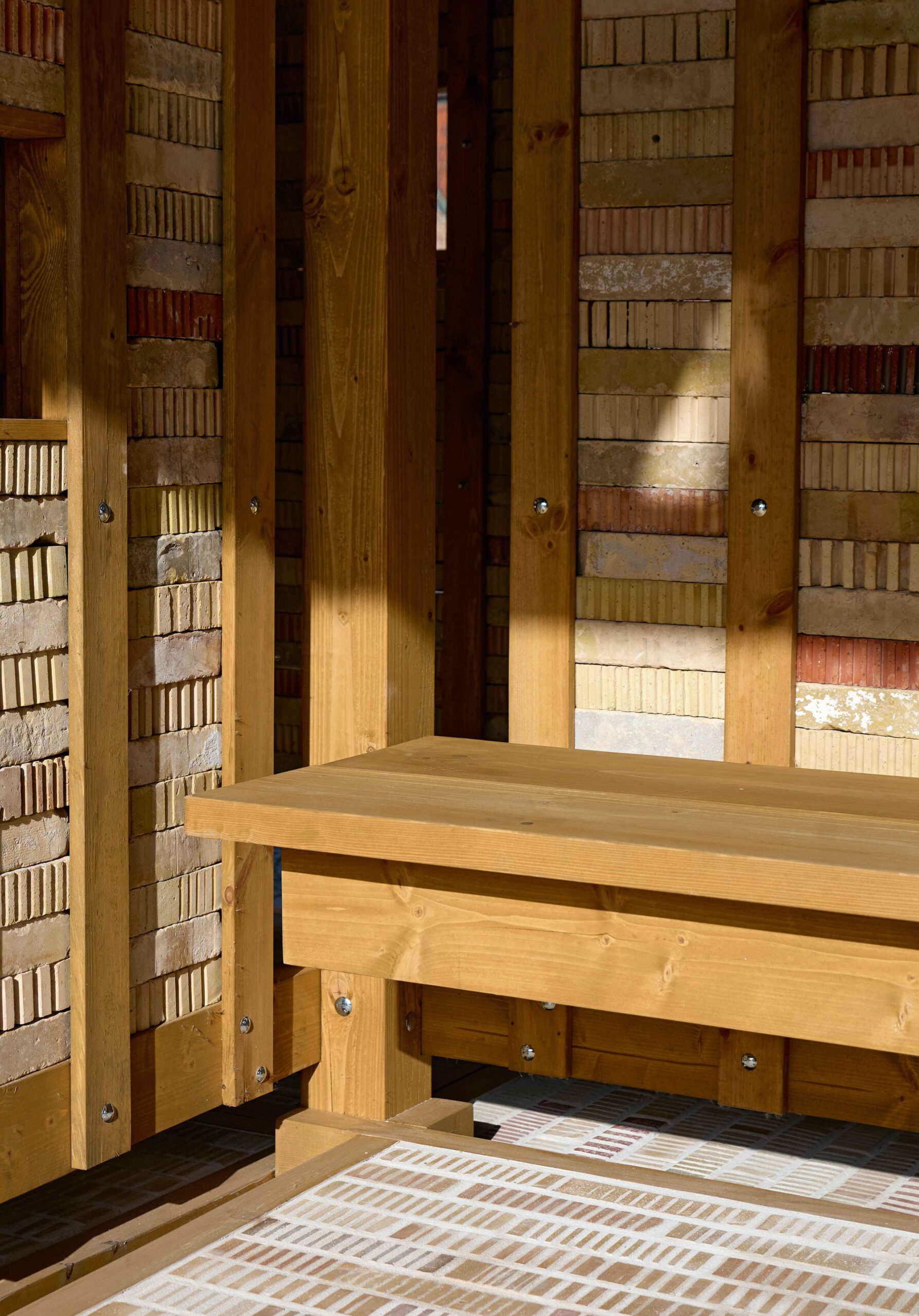
Many design festivals showcase “circular” or “sustainable” installations that are dismantled and discarded after a few weeks. How do you guard against the biennial itself becoming an exercise in greenwashing?
We reject the idea that an architectural event has to be object-based. Much of our program is discursive such as films, talks, walks, workshops. These leave different kinds of traces that are more intellectual, social and political. We’re not interested in a “green” spectacle. We’re interested in long-term change, however incremental.
The biennial includes over a hundred public events: debates, studio visits, screenings. How do you retain focus and impact at an event of this scale?
Curation is about drawing lines between noise and meaning, between energy and focus. We’ve organized the program around key curatorial pillars, each addressing a facet of “slowness” such as time, care, maintenance, circularity, memory. This helps visitors navigate and allows contributors to speak in dialogue, not in isolation.
Also, everything we have gained of exchange, information, knowledge and ideas throughout the biennial will move into our Forum and be continued there. We have a great public program that spans the entire year, of course not as condensed as the biennial program.
We also resist the urge to fill every hour. There are intentional gaps in the program. The city itself becomes part of the experience. Architecture is not just something to be discussed; it’s also something to be inhabited.
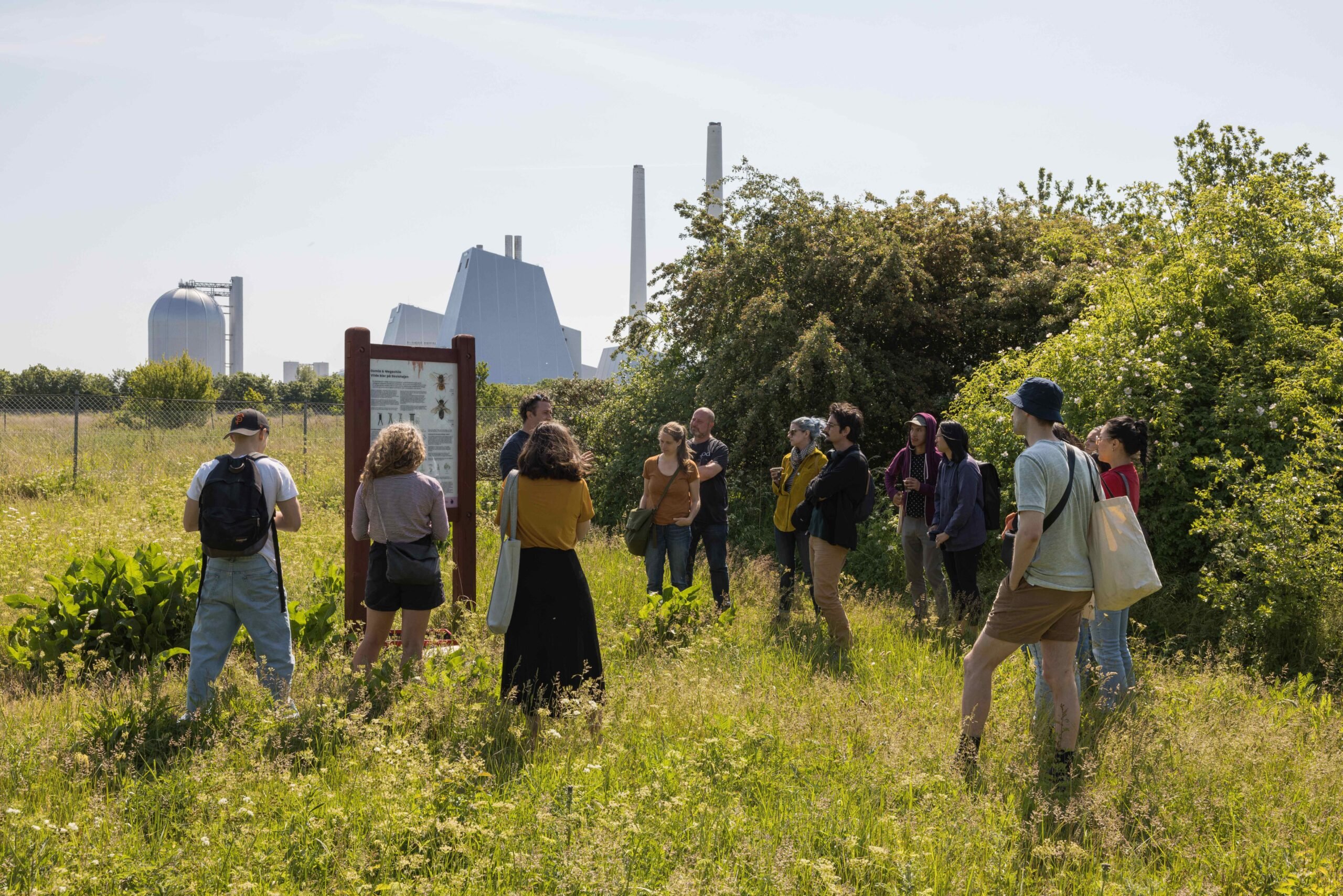
Architecture biennials often end up speaking mostly to insiders. How are you ensuring the event reaches beyond the architectural profession to engage citizens?
This is one of our central concerns. From the beginning, we’ve worked with communities, schools, and civil society groups as co-creators. Some of our most impactful events are those held outside traditional institutions in libraries, community centers, construction sites, communal gardens, etc. Architecture is about everyday life. It’s about housing, transport, public space. Everyone has a stake in it. Our job is to create the conditions where people feel invited to reflect, question, and participate as citizens.
This is why the biennial is a public program. Everyone is invited. Most of it is free, and it’s really a platform for exchange between laymen, professionals, communities, thinkers, from all parts of the world, all kind of professions and socio-economic backgrounds. We’re all connected, and the hierarchy is very flat. You can have the CEO of a big company sit and discuss city planning with a citizen who’s concerned about high rises in their neighborhood.
Looking ahead, how do you measure success — attendance, dialogue sparked, influence on policy or practice?
Success for us is multi-dimensional. Yes, we’ll track attendance and reach, but more importantly, we’ll look at the relationships formed, the policies influenced, the projects that continue after the biennial ends. Did a conversation at the biennial lead to a new housing prototype? Did a local municipality change its procurement process? Did we shift the public narrative around urban time and care? Will the radical law proposals from Indy Johar, Anders Lendager and Kate Orff at our symposium ‘Assemble!’ make it into legislation? Those are the metrics we’re interested in. Slow metrics. Durable ones.
The Copenhagen Architecture Biennial runs until October 19.
Q&A: Josephine Michau on the Inaugural Copenhagen Architecture Biennial
In a world hyper focused on productivity and efficiency, the event is both a provocation and an invitation to slow down, the curator explains.
